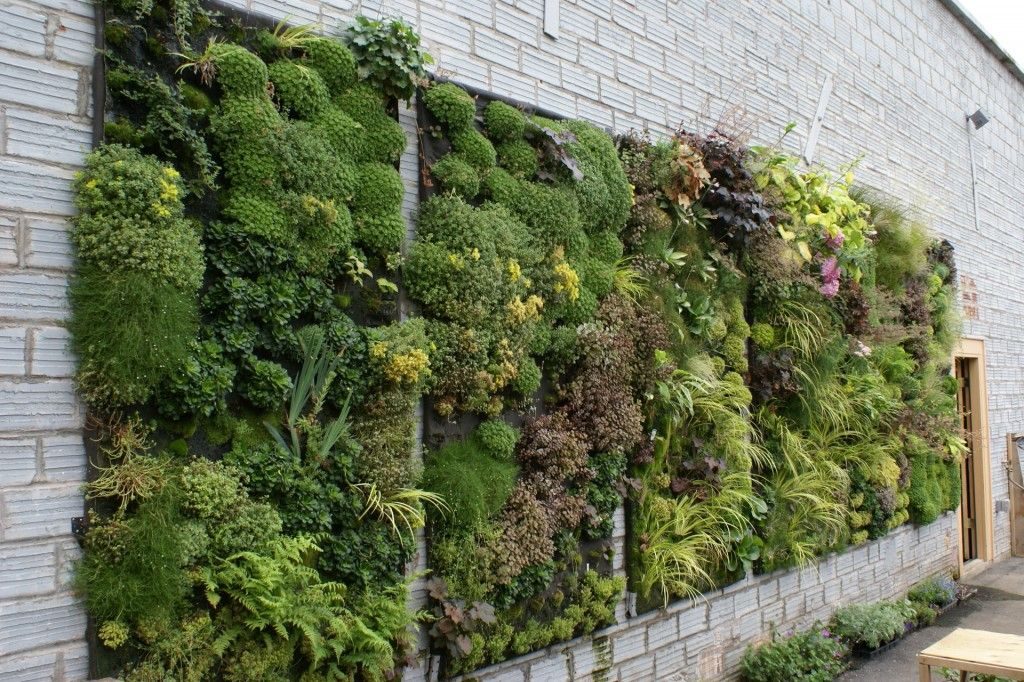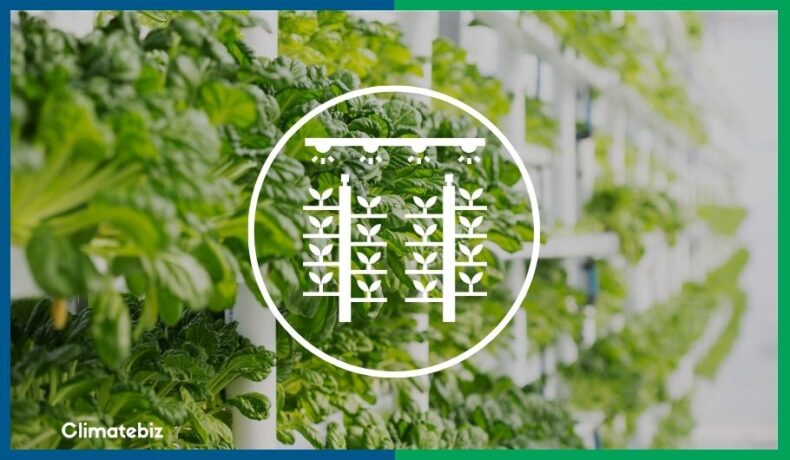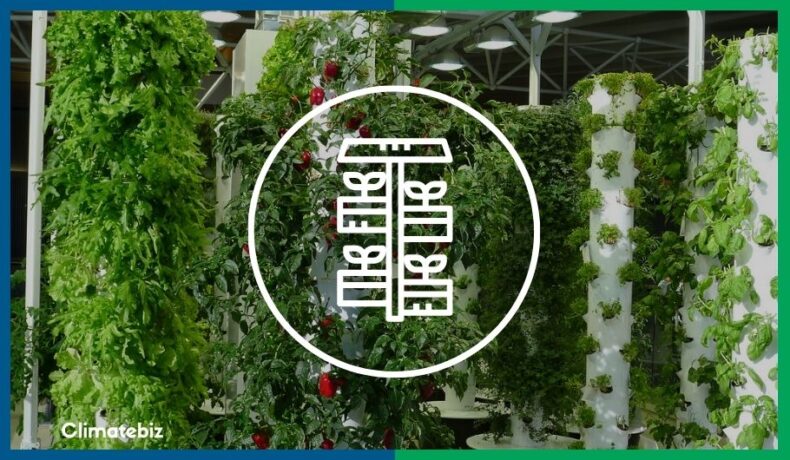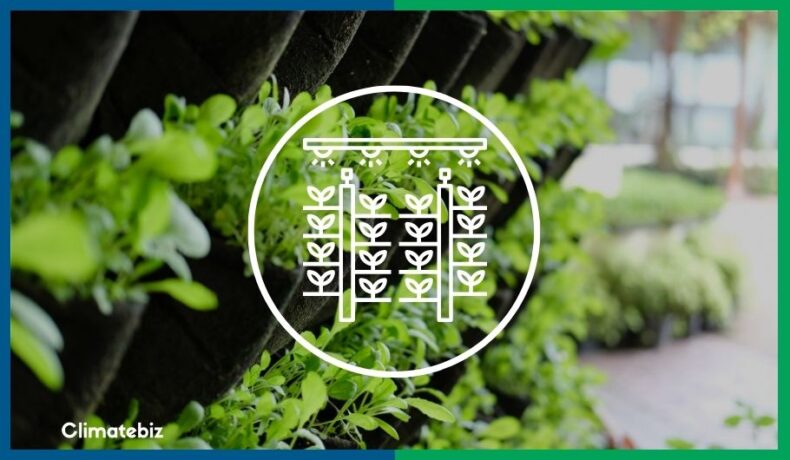
Urbanization, as well as modernization, is a real trend in the population dynamics of today. Vertical gardening systems offer a great way of mitigating the paving and building we see in our neighborhoods, as well as in our own homes.
With population numbers on the rise, we see our neighborhoods growing each year. With this growth comes a price that the climate around us has to pay.
Grasses become driveways, and flower beds become bus stops.
However, there is a fantastic way to incorporate green gardening practices into our homes. A pretty nifty technology that doesn’t require a lot of space and adds a fantastic aesthetic!
Grab a cup of coffee and follow us as we learn the basics of all there is to know in vertical gardening systems.
Affiliate Disclaimer
Table of Contents
What Is A Vertical Gardening System?
Vertical gardening is defined as a method where plants are grown upwards.
The primary purposes of vertical gardening systems are:
- Maximize the use of gardening space for visual purposes.
- To help combat climate change.
- To produce food at home.
Vertical gardening is a great technology to look into, given the population growth rate today.

Source: University of Michigan
What Are The Different Types Of Vertical Gardening Systems?
There are numerous adaptations of vertical gardening systems out there!
These all branch from three primary and most popular types:
- Green walls and container systems (also referred to as living walls)
- Green facades
- Freestanding systems
How Do Vertical Gardening Systems Work?
It’s essential to explore the different vertical gardening systems and how they work when choosing your preferred design.
Here we explore the three most popular types used in our times.
Green Walls And Container Systems
Also referred to as green modular systems or living walls, these green systems are placed across the face of a wall.
The types of green wall systems out there include:
- Substrate-based set ups: plants are grown inside packed tubs or containers of soils and the run-off water from irrigation is collected underneath in drip-trays.
- Hydroponic type systems: plants are planted into special types of foam or other moisturized substances for them to grow in, generally including circulating water.
Green walls can be set up inside your house or on an outside wall.
Green Facades
These comprise plants that climb or creep upwards and/or across a structure.

Source: The Spruce
This type of vertical gardening can include the following:
- Ground-based or direct (where plants grow from the soil up a structure),
- Indirect (where plants grow on a support structure) or
- Façade-bound or indirect with planter boxes (where plants grow at various levels off the groun, such as in boxes).
Freestanding Systems
Freestanding systems are most commonly found in gardens or public park areas.
A freestanding vertical gardening system has a frame where plants grow up and overhead.
You can also integrate these systems inside your home or on the balcony as shelves. These shelves can run as hydroponically set-up indoor systems (requiring additional LED grow lights at times) or be watered manually according to the type of plant.
A great choice when opting for a bit of pretty-looking greenery on a smaller scale or growing a few veggies and becoming self-sufficient!

Source: Apex Furniture
How Much Do Vertical Gardening Systems Cost?
The cost of vertical gardening systems is mainly dependent on the type of system you choose and the size.
Keep in mind — each system requires specific infrastructure and materials to be functional. These may include:
- Types of framework (metal, wooden, etc.)
- The plants you choose
- Watering systems
- Professional installation services
- Maintaining and caring for your gardening system
Green Walls/Living Walls
Living walls are pretty advanced and usually require assistance from professional landscapers or designers.
On average, you are looking at about $100-$250 per square foot of installation. This is because green walls require frames, plants (of course), and regular maintenance services.
Living walls are costly for vertical gardening but certainly are beautiful!
Green Facades

Source: Perini and Rosasco (2013)
The costs will include initial phases, maintenance, and disposal.
For direct green facades, you can expect the following costs for installation (done personally) across the three main types:
Direct
| Phase | Aspect | Time | Estimated Cost |
| Initial | Digging, potting, and installing the plant species | Once off | $604 per m2 with a linear length of 1 meter |
| Maintenance | Pruning | Annually – beginning after the fourth year | Approximately $4 per m2 |
| Removal | Disposal | Once off | Roughly $35 per m2 |
Indirect
| Phase | Aspect | Time | Estimated Cost |
| Initial | Digging, potting, plants, support structure, and transport | Once off | Approximately $644 per m2 with a linear length of 1 meter |
| Maintenance | Pruning | Annually – beginning after the fourth year | Approximately $4 per m2 |
| Removal | Disposal | Once off | Approximately $220 per m2 |
Indirect With Planter Boxes
| Phase | Aspect | Time | Estimated Cost |
| Initial | Plants, support structure, transport, planter boxes, installation of an irrigation system | Once off | Approximately $250 |
| Maintenance | Pruning, watering (irrigation), irrigation system parts, replacing plants (5%/year) | Annually | Approximately $15 |
| Removal | Disposal | Once off | Approximately $220 |
An additional cost relating to each system is cladding renovation, which can cost anything between $700-$1300.
The important takeaway from these numbers is that your budget might be better suited to a specific type of system.
In other words, you can pick and choose based on what is best for you!
Freestanding Systems
Freestanding vertical gardening systems can vary in size; anything from a small bookshelf system, a balcony set-up, right to an indoor greenhouse.
There are many different shapes and sizes available on the market, so you really can pick and choose!
If you’re looking for a simple standing stackable modular unit, you can expect to pay around $20 for a set. A larger shelf structure is approximately $60.
For a larger structure, you can expect anything from $2500 upwards.
Other Costs
Be mindful of additional costs when choosing your vertical gardening system.
Installation
More extensive green walls usually require professional installation.
Other vertical gardening systems you can set up may require modifications to your home; a specialized service should carry these out.
Plant Choice
Different types of plants will range in price and maintenance, but this largely depends on what you want from your system. Perhaps you’re looking for vegetable-producing plants, or maybe you want to green up your living space.
A good idea would be to take some time and shop around for plants suited to your needs — for example, water-wise plants are always a great way to go!
Watering System
Consider the type of watering system you would need for your specific plant set-up and the cost of your monthly bill; succulents require less water while vegetables generally require more.
Maintenance
Caring for your system is simply a must!
Costs may pop up when plants or product parts need replacing throughout the years. It’s also important to remember that these may be unforeseen, so try to take care of your system where you can.
How Long Do Vertical Gardening Systems Last?
Determining how long a vertical gardening system may last depends on several factors, from plants to structure.
These factors may include:
- Plant health: plants need adequate light, water and nutrition. If plants remain healthy and don’t fall victim to unforeseen disease, you will gain a few years of longevity.
- Soil or growing material health: plant soils or foams need to be healthy to provide a long life-span for your plants.
- Building material: systems built with materials such as wood are prone to quicker deterioration and may rot if constantly wet.
What Are The Pros and Cons of A Vertical Gardening System?
Any technology has its pros and cons, upside and downsides. It would be unrealistic to think otherwise.
Pros of Vertical Gardening Systems
Aesthetics
Nothing quite softens the view of a concrete jungle than some greenery.
This aesthetically pleasing pro is only the starting point of how vertical gardening systems can better our lives.
Having a natural-looking landscape can make harsh-looking walls look soft and give us a bit of a break from staring into brick walls all around us!
Improved Inside Air Quality
Plants love absorbing pollutants from the air, and they do it super effectively!
Through their internal processes, plants filter particles from the air (known as biofiltration) and improve the surrounding air quality. This isn’t just restricted to the leaves and stems but also includes the soils or materials in which they are planted.
Better Thermal Efficiency
Research shows that an added benefit of vertical gardening systems is the temperature effect on rooms. In fact, it has been proven that these external systems can make interior spaces 5-10 degrees cooler in the summer months!
This takes place through two primary mechanisms:
- Direct shading (where a green wall provides shading on a specific wall) and
- Evaporative transpiration (where green walls provide insulation).
Less artificial room cooling needed means less energy use and emissions!
Health and Wellness
It may come as a surprise to learn that a vertical garden may improve our overall health and wellness.
Nature has a positive impact on our mental state, stress levels, and healing ability. This is known as a cultural ecosystem service, one of nature’s many gifts to us.
A vertical gardening system also allows us to grow our own vegetables and become more self-sufficient. More nutrients mean improved health.
Aren’t things just starting to lookup? (Yes, literally!).
Economic Advantages
What is one of the harshest impacts on a building’s outer surface? You guessed it; the weather! The harshness of the sun’s rays tends to deteriorate exterior paint on structures.
By having a green wall or a vertical gardening system in your household, you’ll find that your paint lasts longer, saving you money!
Cons of Vertical Gardening Systems
As much as we love the upsides, there are always a few downsides.
It’s important to identify what these are and how they could shape your decision-making process for your future system of choice.
Costly Initial Installation
As much as we dread the initial installation costs, they are crucial to a functioning system!
Certain systems (such as living walls) require extensive installation by professionals. These professionals have the expertise necessary to ensure that a system is installed correctly.
These services will cost a few hundred dollars (depending on the size of the system) but are necessary.
High Energy Cost
One of the elements critical for plant survival is water.
Larger systems and certain irrigation methods need a constant flow of water. Running these systems continuously will require a lot of energy. However, this can bump up our electricity bill quite a bit.
Is there a way to lessen the blow? You could always consider water-wise plants and green energy technology (such as solar power) in your home.
Final Thoughts
Choosing the right vertical gardening system for you will depend on what each system offers and what falls within an affordable range.
It’s also important to weigh up the pros and cons in your scenario — for example, specific systems may produce more but are more energy and water-intensive.
It pretty much boils down to your needs, affordability, and personal preference.
Take the time to research your environment carefully, companies offering services in your area, different types of plants, and what you are prepared to pay — the options are countless!










Fantastic article for a new up and coming trend in agriculture and urban space planning. Looking forward to the next article.
Thanks Daniel, we agree that this is a great up and coming trend.